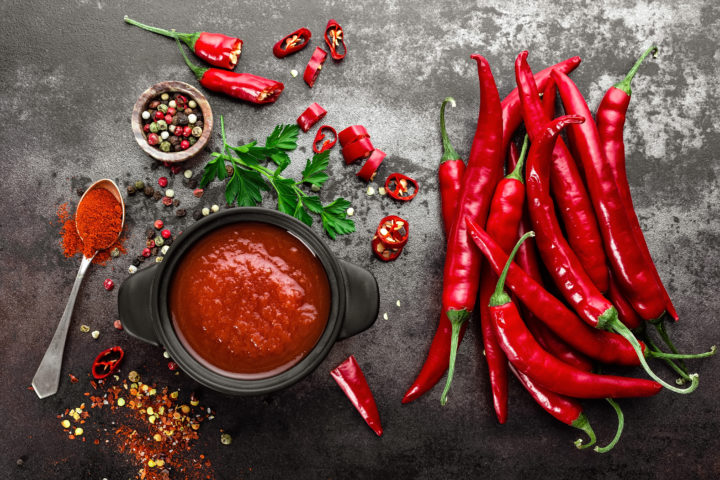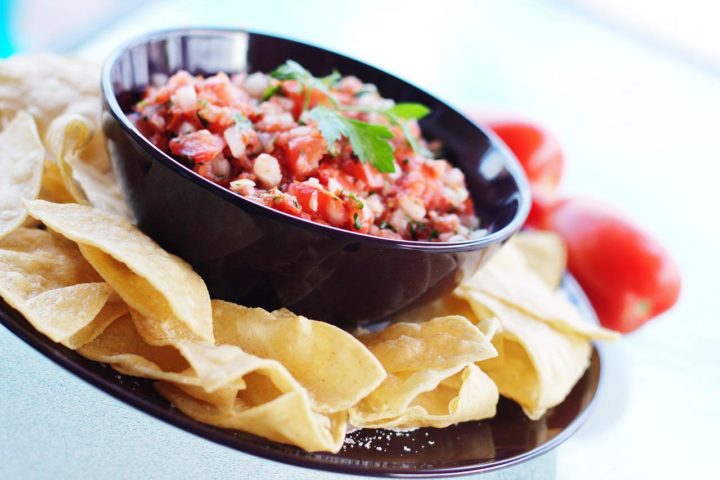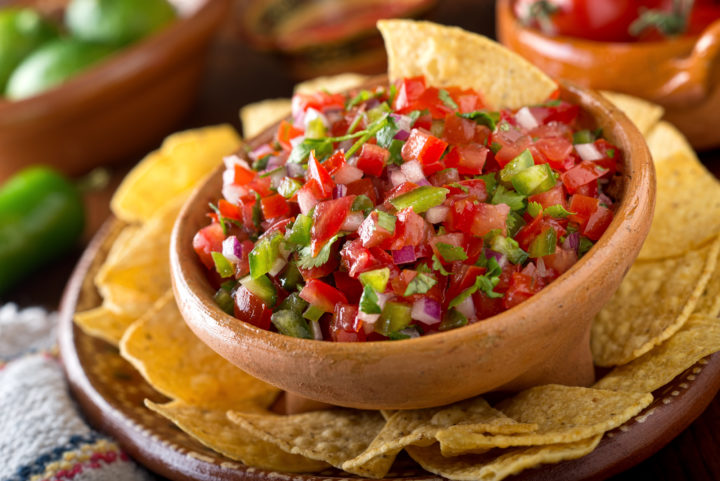
Picante sauce and salsa are cousins. They’re very closely related, but definitely not the same. As we’ll see in this picante sauce vs salsa comparison, there are a few points where these two food items differ and where they are quite similar.
Both these spicy sauces are a part of Mexican, Latin American, and Tex-Mex cuisine and help to liven up some lovely delicacies. Let’s take a closer look and see how these two sauces are different.
Salsa vs Picante Sauce: The Similarities And Differences
Difference Between Salsa And Picante
Since we are pitting salsa against picante sauce, it might be more fruitful to take a look at the key differences between them. For now, I’ll limit the comparison to specific properties of both these sauces, rather than differences in linguistic use and origin.
For foodies, how we use the sauces today is perhaps more important than their history and words. So, let’s consider the key differences.

- Consistency: This is the biggest difference between salsa and picante sauce. Salsa tends to be chunkier thanks to the use of roughly chopped vegetables and ingredients. Picante is usually much thinner and uniform.
- Usage: The thin picante sauce is easier to pour on top of dishes. It’s easy with handheld foods. The thicker salsa is often used as a dip although it might still be put on top of recipes like nachos and black beans.
- Heat: Some people consider picante to be the hotter sauce, though salsa doesn’t feel any less hot than picante. Also, both these sauces have spicy and mild versions available, so things even out.
- Ingredients and preparation: Picante and salsa use the same ingredients. However, picante sauce ingredients are usually cooked. On the other hand, salsa prefers fresh ingredients, though cooked ingredients can be used as well.
If you look closely, the key difference between picante sauce and salsa is the consistency. The others are possible variations, though not always as relevant or applicable in all scenarios.
What Is Salsa?
Interestingly, salsa is just the Spanish word for sauce. Therefore, when we call it salsa sauce, we might as well be calling it sauce sauce. That little nugget of linguistic wisdom aside, it’s perfectly fine to call it salsa sauce.
Apparently, the sauce has been around for a very long time. It was used by Aztecs, Incas, and Mayans. When the Spanish arrived in the Americas, they discovered the sauce and loved it.

Salsa and picante are both tomato-based sauces and have pretty much the same ingredients. These include jalapeno peppers, white onions, and spices for seasoning. Some recipes may also include squash and corn.
Salsa is usually chunkier than conventional sauces. This simply means it has a relatively thicker consistency, which allows its use as a dip. It’s also often placed on top of foods like nachos.
It’s worth noting that there are several ways to prepare salsa. It may be hot and spicy or mild, its consistency can vary from somewhat thin to fairly chunky. Additionally, sometimes the ingredients used might be cooked, while on other occasions they may simply be fresh and raw.
What Is Picante Sauce?
Picante is a Spanish word that translates to hot sauce. As such, picante usually packs a fair amount of heat, though milder versions are available as well. Picante sauce came around sometime in the 1940s when David Pace started the production of Pace Picante Sauce in his factory.
During preparation, ingredients of picante sauce are blended into a thin paste. This consistency is ideal for the sauce to be poured on foods and is especially popular with handheld foods like tacos and burritos.
In a way, most of the picante sauce available in the US is a type of salsa. It uses the same ingredients and has similar preparation. The key difference in this sense remains the consistency, where picante is thinner than salsa.
Picante’s preparation makes it a savory sauce, which is a delicious companion for most foods.
FAQ
Can I Substitute Salsa For Picante Sauce?
Given their similarities, picante sauce can be an excellent substitute for salsa. Or for that matter, salsa can substitute picante sauce. Both these sauces have the same ingredients and similar preparation.
The notable difference is that picante tends to have a thinner consistency and (in some cases) it’s hotter and spicier than salsa. These qualities can work very well for a substitution.
How Many Carbs In Picante Sauce?
Picante sauce is fairly low in carbohydrates. While it does have a small amount of carbs, most people have no qualms in considering it a keto-friendly food. On average, one serving (32g) of Pace Picante Sauce has 2g of carbs.
How Long Does Salsa Last In The Fridge?
Once a jar of salsa is opened (or if you prepared it at home), the sauce usually lasts for 5-7 days. The container should be airtight and in a refrigerator.
When using store-bought sauce, you might be able to stretch the use to about 14 days, but even that might be pushing it. For commercially produced unopened jars of salsa, the best indicator is the expiry date (or best before date) on the packaging.
How To Make Salsa Less Spicy?
Got some hot salsa and don’t know what to do? Adding some lime juice will reduce the hotness of the salsa, while also adding a hint of the citrusy lime flavor. If that doesn’t tickle your tastebuds, adding a few drops of vinegar could help reduce the heat.
Conclusion
As we note in this picante sauce vs salsa comparison, these famous sauces are remarkably similar but they have some important differences.
The biggest point of difference is the consistency, though they may also differ in their heat and spiciness. Generally, both these sauces use the same ingredients and often have similar (or even the same) flavors.